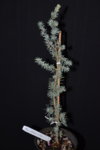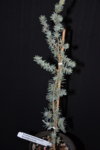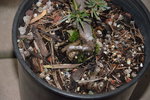As I stated, the reason I don’t like Thunderhead is the buds are about a quarter inch thick. Pencil sized. Or even kindergarten pencil sized! So they will always make coarse growth. Not desirable for bonsai.Good evening Brent!
Yes I know they're babies, and I am not very experienced at grafting.
The stock that has separated, gives the impression to an untrained eye,
that the union is weak and could break in a wind.
I just purchased another grafted BP (Thunbergii Thunderhead) which I was
told the graft was unsightly really, and Adair questioned my purchases of cultivars.
This is why I was replying to his comment on that here. Trying to get his input and
see if I had acquired a much better grafting job. I have an acer palmatum Autumn Moon
that broke at the graft from a wind. I bandaged that and has regrown just fine there.
So you're saying the reverse taper will fill in with bark coming down to soil, in some years. That's good to hear.
Most folks say reverse taper only gets worse with time. Thanks for the input.
So, my point about cultivars is you should know what the characteristics of a cultivar is before you purchase it, and determine if those characteristics are compatible with bonsai cultivation.
So, for instance, “Kishu” and “Itoigawa” are two cultivars of Shimpaku that make very fine tight clouds of foliage. You will never see these at a landscape nursery, they grow too slowly. But you can get them at a speciality bonsai nursery. They’re both cultivars of Shimpaku, yet they’re different. Is one better than the other? Why would I choose one or the other? Why do bonsai nurseries stock both? To obtain the answers to these kinds of questions entails research.
And it gets even worse! The us a “Kirby” strain of Kishu, that some say s better than regular Kishu.
I own a tree that has a special strain of Itoigawa, it reportedly doesn’t go juvenile! Or at least, not easily. Regular Itoigawa goes juvi very easily.
When you get beyond learning the basics, and intermediate skills, and become proficient in bonsai, these nuances might matter. But for most, sticking to the mainline cultivars and varieties is challenge enough.
As Brent said, your new trees are very young. Let them grow for a year to get strong and acclimate to your climate.
Good luck!








